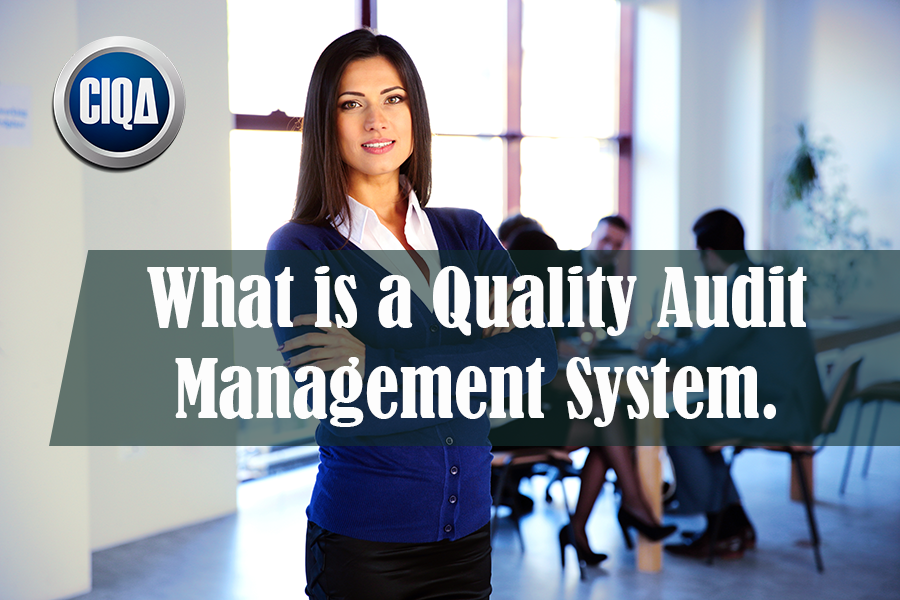
All About What is Quality Audit Management System QAMS.

|
In this article, you will learn what is Quality Audit Management System (QAMS) in compliance with cGMP Good Manufacturing Practices. A quality compliance audit is an inspection conducted by someone internal or external to your organization with the purpose of discovering cGMP deficiencies. It will allow avoiding delays in bringing products to market due to not passing a cGMP audit. A quality audit is also defined as a routine for periodically inspecting with the goal of noticing cGMP unconformities and fixing them before major ones develop. These cGMP audits must be carefully planned and scheduled for each specific quality system area before there is an actual problem as well as keeping accurate records of past inspections, observations, and audits reports. It is mandatory for the regulated industries to comply with the audit requirements expected by the FDA and other organizations as ISO, ICH, etc. The audit schedules must be established to bring the auditee and auditor to be prepared with enough time and resources to make the audit process complete in less amount of time. In facts, many quality audits begin looking the Quality Manual and Document Management Procedures. To download a free Quality Manual Procedure Template, click here. WHAT ARE THE BENEFITS OF THE AUDITS?Audit brings important benefits including, but not limited to:
In theory, the audit will prevent quality system failure before it occurs. It will save time, reduce costs, and keep an operation running efficiently and productively. Since audit management can be very challenging, especially for industries with many inspections. Therefore, exists different audit software to help organize and carry out all audit needs. TYPES OF AUDITS
WHAT IS AN QUALITY AUDIT MANAGEMENT SYSTEM? (QAMS)The Audit Management System is structured and designed to handle the entire audit operations. It will manage the audit requirements, activities, observations, and audit report records. Moreover, it organizes audit works, schedules, audit delivery, grading, and history. An audit management system is a program either manual or electronic intended for the administration, documentation, tracking, and reporting of audit works. Some companies use dedicated software for this purpose, other companies handle their audit management system manually. The audit management process includes managing and maintaining audit records. In some cases, they are capable to manage financial aspects, including budget forecasting and cost-tracking. WHAT KINDS OF AUDITS MUST YOUR ORGANIZATION ACCOMPLISH?Even though the audit is an activity for many industries in general, we aim more specifically to the GMP Audit necessary and required by the FDA and the QMS Quality Management System. Sometimes an initial audit is followed by a requirement of additional recurrent re-audits based on a lapse of time. WHAT IS THE FREQUENCY OF YOUR AUDITS?Many federal regulations and company policies require to comply with specific audit schedules, control of audit tools and features, view completion dates, audit observations or results, and detailed information such as issues that require further investigation, CAPA generation, etc. In some cases, each company establishes its own frequency of QA audit based on a risk assessment. Based on this information, a recurrent audit date or frequency can be generated, and certificates of audit completion must be sent and stored in the document control file. WHEN IS NECESSARY AN AUDIT?An audit shall be done based on the following information and inputs:
More specifically, an audit must be performed on any process, area, equipment, or machinery related to the following areas:
WHY IS MANDATORY AN AUDIT PROGRAM?Government regulations require that regulated companies bring the audit to their quality systems with some frequency. Some industries work under stricter audit requirements due to the type of process and product. Failing to comply with the audit requirements, can cause fines, loss of business, or damage to a business’s reputation. Moreover, the GMP and the QSR mandate to establish a reliable audit program. In addition, the audit management system serves as a logbook and tracking system of all audit observations in the chronologic order that were done. It helps to bring the evidence that audit has been done to each area by date during its life cycle. REGULATORY CONSEQUENCES TO NOT PERFORM AN ADEQUATE AUDIT ON-TIME?Failure to adhere to a proper audit program and schedule is considered a violation of US Federal regulations on good manufacturing practices. As a consequence, medicine or medical device can be termed as adulterated or substandard if the company has failed to bring audit actions, and failed to design and implement an effective audit control program or management system either manual or electronic. In some cases, it may result in an FDA warning observation, product hold, product recall, etc. HOW TO FILL AN AUDIT REPORT FORM?The audit record may include, but, is not limited to complete the following sections and information related to the audit work performed, (as applicable)
FDA READINESS & REMEDIATIONInspection Readiness (IR) is a process of getting ready for an inspection by a regulatory authority (such as the FDA), which is conducting an official review of documents, facilities, records, and any other resources that are deemed by the government authority. Every company is responsible for inspection readiness by providing training to employees and ensuring their understanding and application of policies, standards, and procedures. FDA readiness involves managing risk—understanding the vulnerabilities and areas of improvement, anticipating how investigators will perceive them, and preparing your staff to respond. An FDA 483 or Warning Letter often only addresses a small portion of the true deficiencies in the quality management system (QMS). CIQA can help determine the actual depth and breadth of the QMS deficiencies via a comprehensive FDA Compliance GAP Assessment. The GAP Assessment includes performing baseline audits and developing a remediation plan to address all of the deficiencies and bring the Quality System or specific sub-section into compliance. CIQA is a quality and regulatory consultant with 25 years of experience developing products and managing projects in the medical device supply chain, and pharmaceutical industries. His experience includes research, product development, operations management, manufacturing engineering, equipment design, regulatory affairs, and quality assurance. Specific questions about Document Control Management DCM or quality system training can be directed to CIQA at ramon.cayuela@ciqa.net. SUBSCRIBE AND FOLLOW US TO LEARN MORE.For more details about what is Quality Audit Management QAM, follow us.Three (3) Options to Create Document Control Management DCM Procedures:Bronze Option. You Can Create Your Own Quality Procedures, using a Template.You can download samples of the Document Control Management DCM procedure templates in .pdf format. To see the complete list of the most popular quality procedures templates, click here. In addition, you can request a quotation to buy online a full SOP template document in MS Word format that is completely editable, ready to fill, and adapt to your specific needs. Silver Option. We Can Bring You Formal Training about what is Quality Audit Management.This option is recommended if you want to learn more about how to build robust quality system procedures. One of our expert(s) can provide online step-by-step training to your team (unlimited assistance) on how to build reliable SOPs using our template(s). Also, you can improve your corporate quality procedures and policies by incorporating our template(s) and tools. It includes a fully editable template from the Bronze option, plus training, exams, and a training certificate for each assistant. Request a quote now. Gold Option. We Can Create Customized Quality Procedures.One of our expert(s) will create and prepare your customized SOPs with the inputs and specific information of your company. It includes a fully editable template from the Bronze option, plus online support in document creation, implementation, and training. Request a quote online. Get in compliance today, CONTACT US (Hablamos Español)REFERENCES: What is Quality Audit ManagementSTATUTORY AND REGULATORY REQUIREMENTS TITLE 21–FOOD AND DRUGS PART 820 Medical Devices 820.22 Quality audit. Each manufacturer shall establish procedures for quality audits and conduct such audits to assure that the quality system is in compliance httpss://www.accessdata.fda.gov/scripts/cdrh/cfdocs/cfcfr/CFRSearch.cfm?fr=820.22 2 CFR § 200.501 – Audit requirements httpss://www.law.cornell.edu/cfr/text/2/200.501 For more information about what is Quality Audit Management, refer to: httpss://www.intertek.com/auditing/gmp/ httpss://haccpmentor.com/gmp/gmp-audit/ httpss://ispe.org/initiatives/regulatory-resources/gmp/audit-considerations httpss://www.fda.gov/media/90179/download httpss://www.orielstat.com/blog/what-is-mdsap-certification/ httpss://www.bsigroup.com/en-US/medical-devices/Our-services/Medical-Device-Single-Audit-Program/ |

Ramon Cayuela, MS, BS, Chemical Engineering
CIQA President and CEO.
I've been working in validation engineering since 1992 with many multinational pharmaceutical companies. I love sharing my passion and knowledge with others. If you have any questions about anything (or just have general questions). I will be more than happy to assist you. You can count on the BEST customer service on CIQA. I go to great lengths to make sure my clients are 100% satisfied with their purchases and check emails/messages consistently throughout the day. You can rest assured that everything being sold here is as-described or your money back. I look forward to working with you!
Related Articles
Subscribe to get validation
news and free tips by email.
Need Additional Help?















